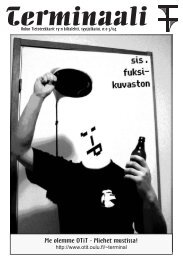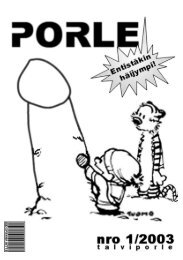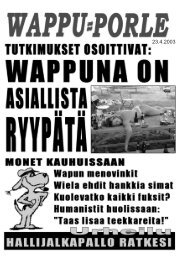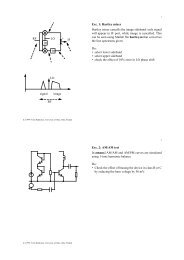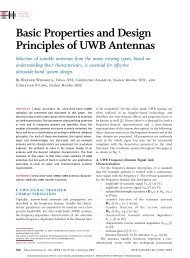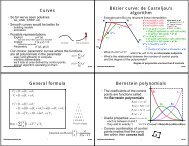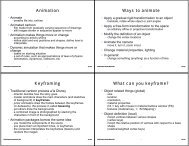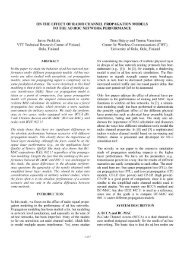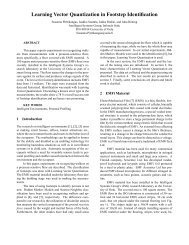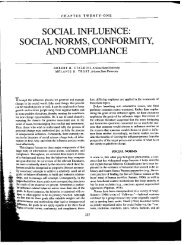Accurate, Dense, and Robust Multiview Stereopsis - Department of ...
Accurate, Dense, and Robust Multiview Stereopsis - Department of ...
Accurate, Dense, and Robust Multiview Stereopsis - Department of ...
Create successful ePaper yourself
Turn your PDF publications into a flip-book with our unique Google optimized e-Paper software.
FURUKAWA AND PONCE: ACCURATE, DENSE, AND ROBUST MULTIVIEW STEREOPSIS 1371<br />
Fig. 12. Reconstructed patches after the initial feature matching step. Patches are sparse, noisy, <strong>and</strong> erroneous before the expansion <strong>and</strong> the<br />
filtering.<br />
Fig. 13. Three filters are used to remove erroneous patches (Section 3.3). The first two filters enforce global visibility consistency <strong>and</strong> the last filter<br />
enforces weak regularization. Patches detected as outliers by each <strong>of</strong> the three filters are shown for the first iteration <strong>of</strong> our algorithm. Note that more<br />
patches are added during the subsequent iterations, leading to the results <strong>of</strong> Fig. 11.<br />
5.3 Evaluations<br />
Quantitative evaluations <strong>of</strong> state-<strong>of</strong>-the-art MVS algorithms<br />
are presented in [2] in terms <strong>of</strong> accuracy (distance d such<br />
that a given percentage <strong>of</strong> the reconstruction is within d<br />
from the ground truth model) <strong>and</strong> completeness (percentage<br />
<strong>of</strong> the ground truth model that is within a given distance<br />
from the reconstruction). The data sets consist <strong>of</strong> two<br />
objects (temple <strong>and</strong> dino), each <strong>of</strong> which, in turn, consists <strong>of</strong><br />
three data sets (sparse ring, ring, <strong>and</strong> full) with different<br />
numbers <strong>of</strong> input images, ranging from 15 to more than<br />
300. Note that the sparse ring temple <strong>and</strong> sparse ring dino data<br />
sets have been used in our experiments so far. Table 2 lists<br />
the evaluation results with other top performers in the main<br />
table provided at [2], <strong>and</strong> shows that our approach<br />
outperforms all <strong>of</strong> the other evaluated techniques in terms<br />
<strong>of</strong> both accuracy <strong>and</strong> completeness for four out <strong>of</strong> the six data<br />
sets (the intermediate temple <strong>and</strong> all the three dino data sets).<br />
Our approach also has the best completeness score for the<br />
sparse ring temple data set. 10 We believe that one reason why<br />
our results are among the best for these data sets is that we<br />
take into account surface orientation properly in computing<br />
10. Rendered views <strong>of</strong> the reconstructions <strong>and</strong> all <strong>of</strong> the quantitative<br />
evaluations can be found at [2].




